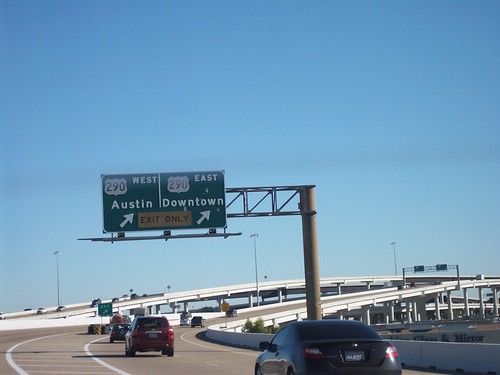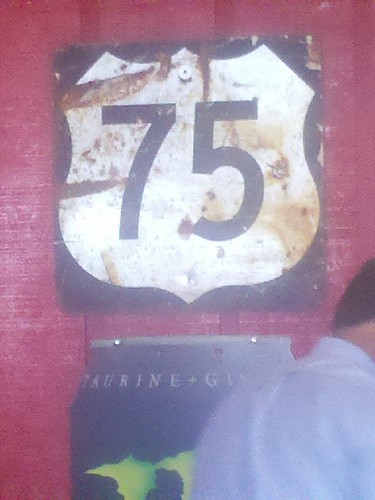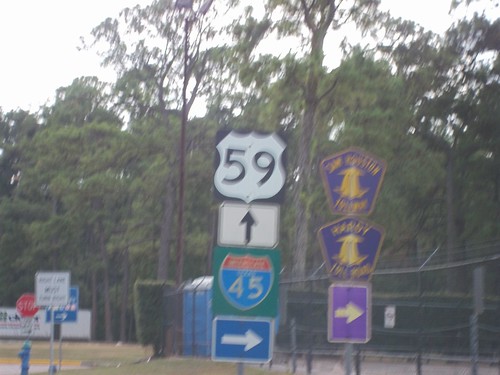As from the prior post, I was in Houston last week. I didn't get to take more than a half dozen photos, including the purple Westpark Tollway guide in the post below, but three of them are interesting (though not of the best quality).
First, there are still a number of button copy guide signs on the Sam Houston Tollway - mainly at the larger interchanges (I-10 and US 290) for example. And here is one older button copy overhead at US 290.

At lunch one afternoon, I found this older US 75 shield. US 75 hasn't been in Houston since 1987. Thank goodness for cell phone cameras!

Finally, the biggest find - but the worst in quality - along one of the access roads at Bush Intercontinental Airport - I found this older Interstate 45 Texas shield.

I didn't have the ability to get out of the car and take the photo, and on this trip I took a Kodak EasyShare point and shoot. So sorry about the quality, but at least it was taken!
First, there are still a number of button copy guide signs on the Sam Houston Tollway - mainly at the larger interchanges (I-10 and US 290) for example. And here is one older button copy overhead at US 290.

At lunch one afternoon, I found this older US 75 shield. US 75 hasn't been in Houston since 1987. Thank goodness for cell phone cameras!

Finally, the biggest find - but the worst in quality - along one of the access roads at Bush Intercontinental Airport - I found this older Interstate 45 Texas shield.

I didn't have the ability to get out of the car and take the photo, and on this trip I took a Kodak EasyShare point and shoot. So sorry about the quality, but at least it was taken!

Comments